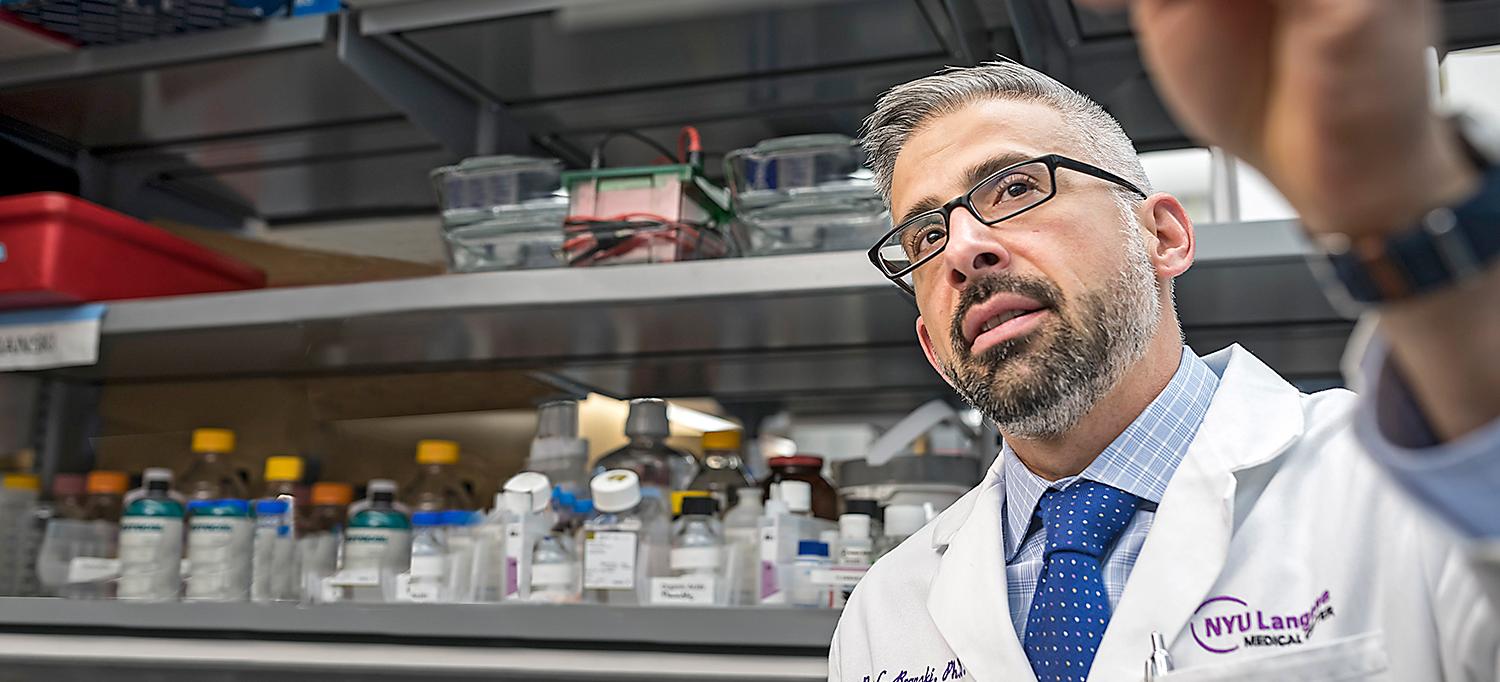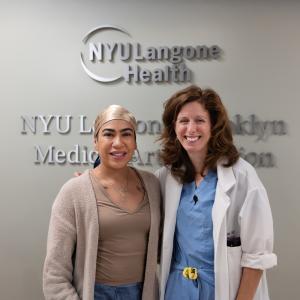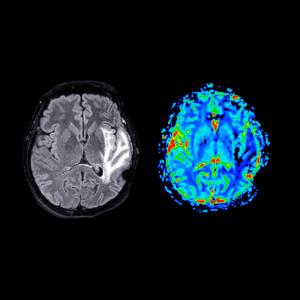
As vice chair for research, Dr. Ryan C. Branski is helping Rusk Rehabilitation build on their tradition of excellence in improving rehabilitation medicine through research.
Photo: Karsten Moran
For more than 70 years, Rusk Rehabilitation has been dedicated to advancing the field of rehabilitation through scientific inquiry and to developing new technologies to enhance patient care. In 2020 that mission advanced on several fronts.
A New Leader Takes the Helm
In March, Ryan C. Branski, PhD, was named the Howard A. Rusk Associate Professor of Rehabilitation Research and vice chair for research at Rusk Rehabilitation. Dr. Branski, who is also an associate professor in the Department of Otolaryngology—Head and Neck Surgery, has been a faculty member at NYU Langone since 2010. In addition, he heads a National Institutes of Health–funded laboratory that seeks to develop optimized therapeutic approaches for diseases of the upper aerodigestive tract that manifest as speech, voice, and swallowing disorders. His team takes a regenerative medicine approach, pioneering the delivery of gene therapy as well as tissue-engineering constructs to address functional deficits that alter communication and deglutition.
Dr. Branski has published more than 100 peer-reviewed papers and is a frequent speaker at national and international scientific meetings. He is one of only a few investigators to be named a fellow of the American Speech-Language-Hearing Association, the American Laryngological Association, and the Academy of Otolaryngology–Head and Neck Surgery.
In his new role, he will oversee Rusk Rehabilitation’s wide-ranging research enterprise, which includes programs in aphasia and language, assistive technology, biofeedback, cardiopulmonary conditions, emotion and brain injury, eye–hand coordination, neuropsychology, swallowing, stroke, traumatic brain injury, the vestibular system and balance, and vision integration.
“This is a wonderful opportunity to build upon Rusk Rehabilitation’s tradition of excellence in research,” Dr. Branski says. “I’m excited to help our faculty enhance the level of success that they’ve achieved over the years and to strengthen our research workforce through targeted recruitment of scientists who have the right phenotype to fit into the Rusk family—those who share our commitment to doing impactful research and to seizing every opportunity to make a difference.”
Fostering Progress in Rehabilitation Technology
Translating rehabilitation research into novel technologies has long been the personal mission of John-Ross Rizzo, MD, assistant professor for Rusk Rehabilitation and the Department of Neurology and director of innovation and technology at Rusk Rehabilitation. The latter position, created in 2019, is one of the first of its kind in a rehabilitation department of an academic medical center.
“The idea is to create infrastructure that will enhance our faculty members’ and trainees’ understanding of how tech innovation is done, including the ins and outs of the patent process, and then to support them in bringing their ideas to fruition,” Dr. Rizzo says. “We want to build bridges between innovators within the department, with those in other departments at NYU Langone, and with private industry, fostering strategic partnerships with medical device companies, telecom companies, even gaming companies.”
Among the first fruits of this endeavor is the Tandon/Rusk Transformer Challenge, launched in October 2020 in collaboration with NYU Tandon School of Engineering (where Dr. Rizzo also holds several academic appointments). The challenge invites experts from Rusk Rehabilitation and engineers at NYU Tandon School of Engineering to form teams to create new assistive technology, rehabilitation apps, wearable devices for preventive care, and other innovations. The teams, which must include at least one member from each group, will compete for two $10,000 prizes and the chance to take their projects from concept to prototype—and eventually to products or services that can be brought to market. The winners will be announced in mid-2021.
Developing Better Navigation Tools for the Visually Impaired
Dr. Rizzo is also director of the Rehabilitation Engineering Alliance and Center Transforming Low Vision (REACTIV) lab at Rusk Rehabilitation. There, his research focuses on assistive technology designed to help people who are visually impaired, whether permanently, due to medical conditions, or temporarily, as with military personnel conducting night operations or firefighters navigating smoke-filled buildings. This work is driven in part by his own experience as a patient with choroideremia—an inherited, progressive eye disorder that has left him legally blind.
One of the REACTIV lab’s areas of concentration is the development of advanced wearable devices to provide visually impaired pedestrians with step-by-step navigational instructions and obstacle warnings. In April 2020, Dr. Rizzo and his team were awarded a $1.5 million grant from the National Science Foundation’s Smart and Connected Communities program for a project addressing the challenges that low- to no-vision commuters face when using public transportation.
“For this population, the first mile—getting from your domicile to public transport—is often very difficult,” Dr. Rizzo notes. “A lot of people end up depending on car services, taxis, or family members to drive them. Many others simply end up unemployed.” The grant will support the development of wearables capable of guiding visually impaired commuters to a subway station or bus stop using existing Wi-Fi environments such as LinkNYC, a system of kiosks now being installed throughout New York City.
Such assistive devices will need to handle more data-intensive processing than those currently available. The goal is to enhance the platform already developed by Dr. Rizzo’s lab—which utilizes backpack-mounted sensors, advanced machine vision, wireless communication, and human–machine interfaces—by enabling it to perform “connected” dynamic localization and navigation assistance in complex urban environments. This effort will require research on topics ranging from low-vision behavior and city agency cooperation to optimized data streams and enhanced power management.
A crucial aspect of the project is to create real-time maps of walking patterns generated by the users themselves. Dr. Rizzo envisions a system that could stream GPS-enabled accessibility data to city departments, enabling them to quickly correct mobility obstacles such as cracked sidewalks and other tripping hazards.
“Ultimately, we hope to make commuting safer and easier for visually impaired people,” Dr. Rizzo says. “Our aim is to reduce the economic burdens on them and their families and help them live healthier, more satisfying lives.”

